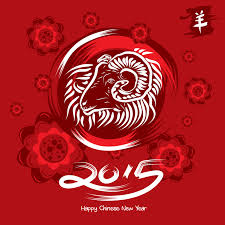MarketMuse update courtesy of ETFTrends’ Todd Shriber looking at China related ETFs.
In the Chinese zodiac, 2015 is the year of the goat, but a popular exchange traded fund tracking China’s onshore equities is getting bearish treatment.
The Deutsche X-trackers Harvest CSI 300 China A-Shares ETF (NYSEArca: ASHR), the largest U.S-listed A-shares ETF, had 6.3% of its shares outstanding sold short as of Feb. 23, reports Belinda Cao forBloomberg.
ASHR surged 51.3% last year, making it one of 2014’s best-performing non-leveraged ETFs. That performance was better than quadruple the showing by the iShares China Large-Cap ETF (NYSEArca: FXI), the largest U.S.-listed China ETF. However, the 2014 A-shares rally has those stocks looking richly valued relative to their Hong Kong-listed counterparts, encouraging traders to up bearish bets on ASHR.
“The number of shares borrowed and sold short to profit from a decline in Deutsche Bank’s A-share ETF was 1.8 million on Feb. 23. That’s close to the record of 2.4 million, or 8.2 percent of total shares outstanding, reached Feb. 13,” Bloomberg reports, citing Markit data.
However, another catalyst could be encouraging the increased bearish bets on ASHR. On Jan. 21, Deutsche Asset & Wealth Management (DAWM) was forced to limit creations of new shares in ASHR because increased demand for the ETF was forcing the fund o bump up against their respective Renminbi Qualified Foreign Institutional Investor (RQFII), which allows the funds to purchase A-shares equities.
Creation limits often lead to ETFs, particularly those with exposure to markets that are closed during the U.S. trading day, trading at premiums to net asset value. Professional traders then look to profit from the gap between the ETF’s market price and lower NAV by shorting the ETF. Since the start of 2015, ASHR has traded at a premium to its NAV in 26 days, according to DAWM data.
Although the most recently announced creation limit for ASHR has not yet been lifted, it should be noted the ETF was affected by the same scenario twice in 2014 and DAWM was quick to get ASHR’s RQFII limit increased.
With ASHR’s 2014 surge, some money managers now prefer H-shares to A-shares, but that means they are also missing out on a notable rally in A-shares small-caps.
The Deutsche X-trackers Harvest CSI 500 China A-Shares Small Cap Fund (NYSEArca: ASHS), which was subject to a second creation limit last November, is up 12.1% this year. ASHS tracks the CSI 500 Index of Shanghai- and Shenzhen-listed small-caps.
The Market Vectors ChinaAMC SME-ChiNext ETF (NYSEArca: CNXT), the younger of the two A-shares small-cap ETFs, has surged 23.7% year-to-date, making it 2015’s top-performing non-leveraged ETF. CNXT, which is heavily allocated to mid-caps, tracks the SME-ChiNext 100 (SZ399611), which provides exposure to the 100 most liquid mid- and small-cap stocks that trade on the Small and Medium Enterprise (SME) Board and the ChiNext Board of the Shenzhen Stock Exchange (SZSE).

